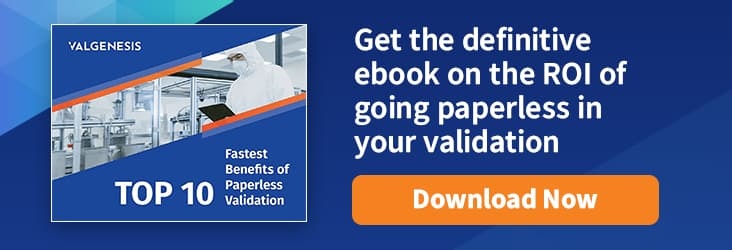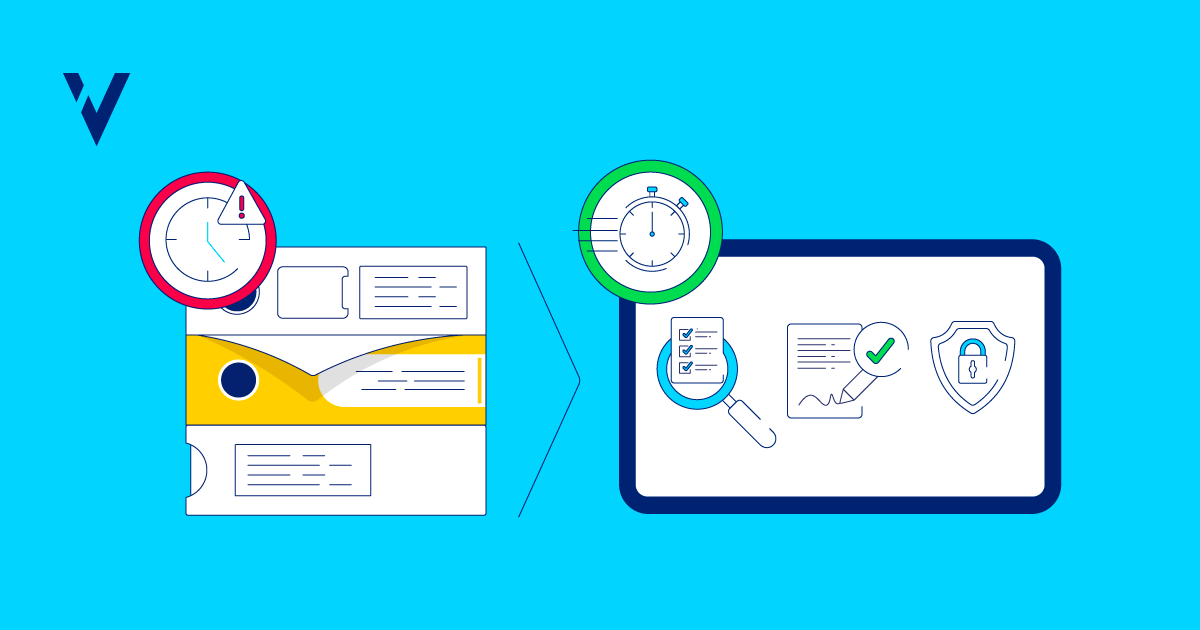Some stats: In a 2016 Xerox study, 80 percent of companies want to create paperless processes and workflows … the Sierra Club [and] Reduce.org, … [say] the average office employee [generates] 10,000 sheets of paper per year …equivalent to one tree [costing] an estimated $725 USD. … according to RecordNations.com, 45% of that paper winds up in the trash.
News Flash: Paper is Awful
Here’s the most obvious benefit of paperless validation: you’re not killing forests by printing mountains of documents, punching three-holes and putting them in binders for storage in a document archive that is only accessed during audits or inspections. (Or if you need to refresh your memory by reading said monolithic paper mountains.)
Have you ever calculated how much you spend on a paper document archive? You may be surprised when you sum up the cost of square footage, buildout, and resources to maintain it all. Those that have done the math know it’s never a pretty number.
Big Stacks Aren’t Better
There’s a sense of false security when we equate the amount of paper we generated with the effort and diligence put into validation. Surely a six-foot stack of documents must be twice as good as a three-foot stack. A seasoned auditor, or inspector, knows this isn’t necessarily true.
In fact, the challenge of maintaining templates, formatting, standards, redlining, collating comments and feedback, all of this, is prone to human error. And once printed, it requires humans to re-read the pages to make sense of the information. Only one person-at-a-time can be reviewing, unless you make a copy, and this raises even more concerns. It’s not backed up, so if you lose it, even more effort is needed to attempt to re-create.
To Err is to Be Human
The more manual it is the more human it is. In laborious and tedious tasks, corners get cut, loopholes exploited, and focus loses out to boredom and distraction.
With a few rare exceptions, the human brain isn’t designed to sift through long, repetitive, discrete data sets. Computers were literally invented to solve this deficiency. They’re designed with data in mind. They never get bored. They’re consistent. And they’re faster.
The Future Started 25 Years Ago
Paperless validation is the same as paper-based validation. Different mediums, same results.
The regulation (21 CFR Part 11) hasn’t changed since 1997. The basis for Part 11 was to allow for electronic records and electronic signatures. But our industry has yet to fully leverage the power of technology and how it can digitally manage data as electronic records.
We’re slow to adopt technological advances. Patient safety concerns are often cited. But is resisting technological progress improving patient safety, maintaining status quo, or jeopardizing it? No one wants to use bleeding edge technology. It’s called “bleeding” for a reason. But neither do you want to move so slow that the industry passes you by. Embracing innovation is the heart of life sciences. Part of that drives improved patient outcomes. Another part drives improved processes within your organization.
Paperless validation is the logical progression of the validation discipline. We’ve had permission since 1997 with Part 11 and subsequently EU’s Annex 11. Then, it was all about removing paper documents.
Now, the benefits of paperless are so much more than “no paper”.
What About that Other 75%?
We know the benefits of getting rid of physical paper in favor of electronic records in validation processes. But that’s just part of the picture. There are other major benefits to paperless validation.
|
25% Grab Easy Bottom-Line SavingsReduce paper, binders, printing costs (including service calls), shipping, storage overhead, destruction and disposal services. This is significant bottom-line cost-savings that directly free up budget for more productive initiatives. |
25% Follow the Sun, VirtuallyAuthorized individuals can instantly access the same information simultaneously. You can divide and conquer with follow the sun validation, empowering distributed, multi-site teams around the world to collaborate and get the job done faster. |
|
25% Recover from DisastersDigitized paperless systems are backed up, preferably in a cloud environment with high availability, fault tolerance, and redundancy across multiple geographic locations. In the event of a disaster, recovery of all validation information and ensuring continuity of in-flight projects is simplified. |
25% Get the Big Picture from DataOnce digitized, electronic records in your validation process can be abstracted into “big picture” reports. Where are the slowdowns in approval? How many revisions are executed? What are the macro trends between engineers and quality? |
How to Start Paperless Validation
Before running out and buying a paperless validation system, it’s important to get answers to the following questions. We talk to many customers and know these take time. But they’re fundamental to long-term success with paperless validation.
- Do you have commitment from the top?
- Do you have buy-in from all key stakeholders?
- Is there money in the budget?
- Do you have a timeline when to implement a paperless validation system?
- Is your organization’s culture capable of embracing change?
- Do you realize there’s a problem with manual paper-based validation?
- Do you know how to find the right paperless validation solution provider to partner with?
You can find the answers to 1-6 within your organization.
Regarding question 7, here are a few points to consider:
- There’s a big difference between those that say they can do it versus those that are doing it. In other words, a “can do” attitude is nice, but not the same as “done it”. Look for evidence of successful implementations.
- Has the vendor proven themselves in stability, longevity, market share, and proven domain expertise in life sciences?
- Has the vendor’s solution withstood auditor scrutiny and is proven defensible for a regulatory inspection?
- Does the vendor provide an infrastructure that is reliable (at least 99.999% uptime) and scalable, elastic, and dynamic, allowing you to change scope as validation needs change?
- Does the vendor support the validation processes with the features and functions you actually need?
Although ValGenesis is the pioneer of paperless validation and the market leader in both technology and customers, it’s critical that you evaluate all vendors through the same methodology.



